7 Ways to Design a Garden That Flows and Intrigues
http://decor-ideas.org 09/19/2013 17:50 Decor Ideas
Many of our gardens seem to be compartmentalized, mimicking our lives. We wake up, go to work, go to lunch, drive home from work, pick up the kids, prepare dinner, watch TV and head to bed, only to repeat the process the next day. The garden spaces with which we surround ourselves are much the same. We have our front yards, our side yards, our backyards, our children's play areas and our vegetable beds. We have unconsciously convinced ourselves that this is the way it has to be.
What if our garden spaces flowed together seamlessly, creating one homogenous space? Are you saying to yourself that this could never happen? Let's see how it's done. Let's learn the art of mastering garden transitions.
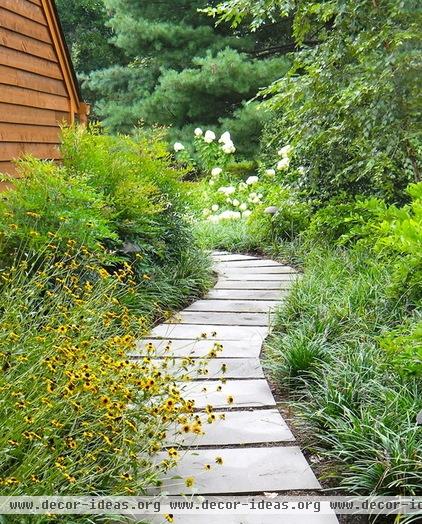
1. Reimagine your hardscape and bed lines. Serpentine lines both invoke the imagination and have a relaxing effect upon the mind. In art theory this shape is referred to as the line of beauty. It infuses a composition with vitality, as opposed to straight lines, which signify death or inanimate objects.
This bluestone walkway seems to be endless, disappearing around the bend. Don't you wonder what lies beyond?
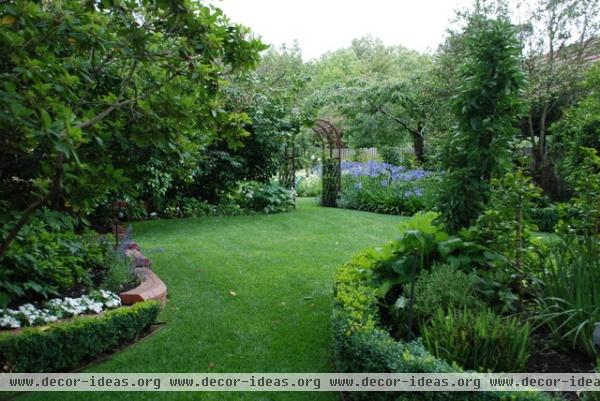
Perhaps your hardscape is firmly established and not easily changed. No worries. Redesigning your bed lines to create more graceful curves will give your space that flow and intrigue you've been missing, allowing for a pleasing transition from space to space.
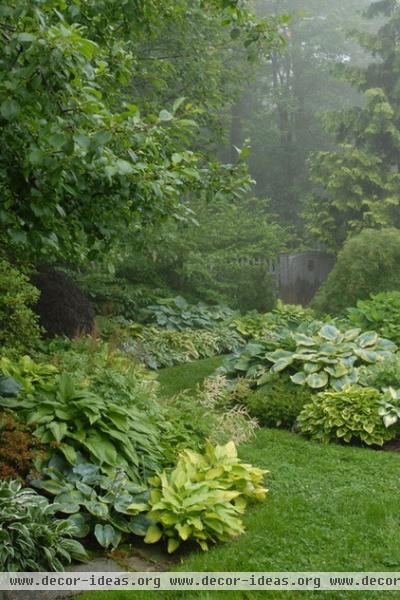
2. Repeat key elements. The use of a key element repeated throughout a garden gives it peaceful continuity. This technique is especially effective when the key element crosses over a pathway into the parallel bed, moving the eye back and forth throughout the space.
Notice how this shady mixed border carries the eye through the space. Even though this garden relies heavily upon hostas for interest, it is the large-leafed hostas (Hosta cvs, USDA zones 3 to 8) that punctuate the space from side to side and move the eye down the pathway.
The repetition of the large-leafed hostas allows for the peaceful transition to pockets of different plants.
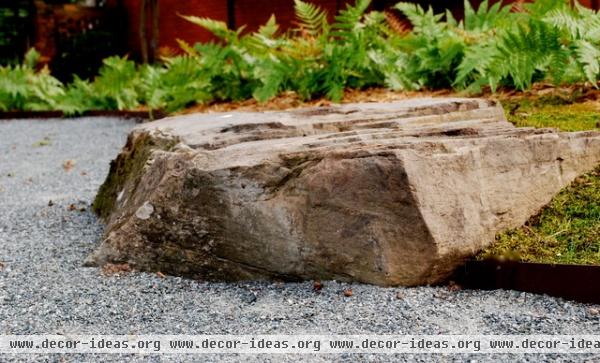
3. Interject an element to induce transition. Boulders can be used to provide interest and contrast. This gives the designer a natural opportunity to begin something new. In this photograph a boulder has been cut into the metal edging along the pathway to provide unexpected interest and a natural transition point between a moss garden and a mass planting of autumn ferns (Dryopteris erythrosora, zones 5 to 9).
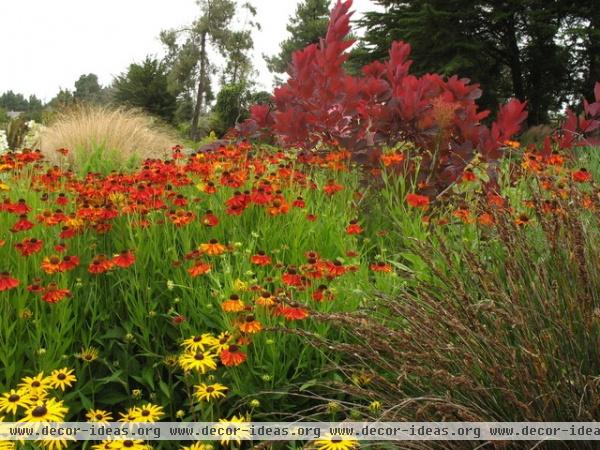
4. Become reacquainted with color flow. Think back to middle school science class. Do you remember learning about Roy G. Biv? This initialism was an easy way to remember natural color flow, the colors of the rainbow: red, orange, yellow, green, blue, indigo and violet. This same color flow can create a natural and peaceful transition in the garden.
Notice the vibrant yet tranquil progression of color in this well-designed prairie-style garden. Red flows effortlessly into orange, which in turn flows into yellow. Wouldn't the introduction of a pink or violet flower be an unwelcome intrusion?
Become reacquainted with Roy G. Biv. Your garden will be a better place because of it.
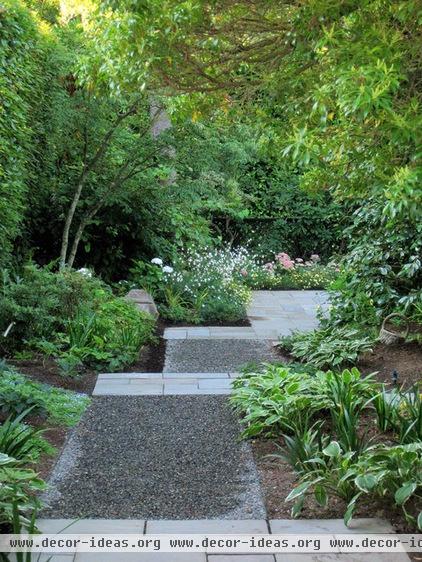
5. Mix up your materials. Perhaps you have an existing patio, or are considering adding one but are unsure how to make it feel like a natural part of your garden.
Take a cue from this backyard. The gravel covering the path leading to the patio is the same color as the bluestone patio. Bands of bluestone have been placed within the pathway, creating continuity and a peaceful transition.
In addition, by laying out the pathway in a yatsuhasi, or Japanese zigzag, pattern, the designer has created a unique and dramatic space.
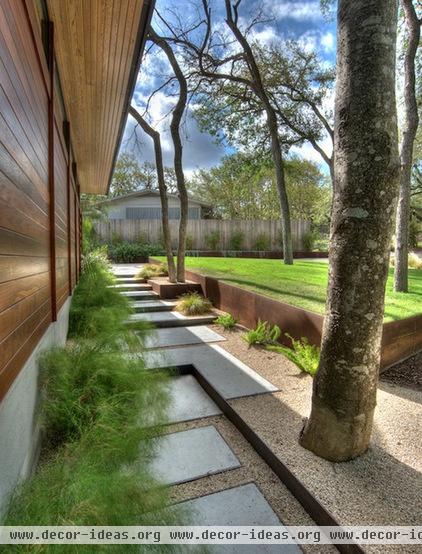
6. Create different levels. Terracing a space can result in both logical and dramatic transitions. The added third dimension allows for more diversity in themes and activities within a confined space.
You will notice a surprising number of substrates in this yard, from the gray concrete pads to the tan gravel to the turf. What keeps all of this from being overpowering? The answer lies in the varying heights, masterfully woven together with bands of Cor-Ten steel that mimic the color of the house siding.
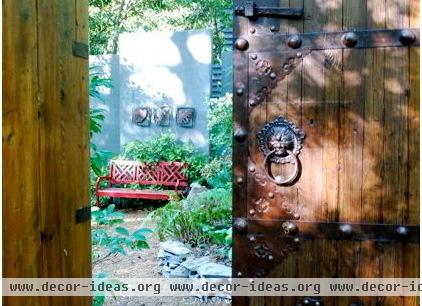
7. Add a gate. Bold transitions are desirable to make dramatic statements in some cases. Gates can be aesthetically useful when a garden is too predictable and needs to be injected with interest, or when two distinctly different garden spaces adjoin.
In either case why settle for an ordinary, mundane gate when, with just a bit more effort, you could add something unexpected and unique? Scouring antique shops, import stores and architectural salvage warehouses can yield a treasure trove of possibilities.
More: Browse thousands of inspiring gates
Related Articles Recommended












